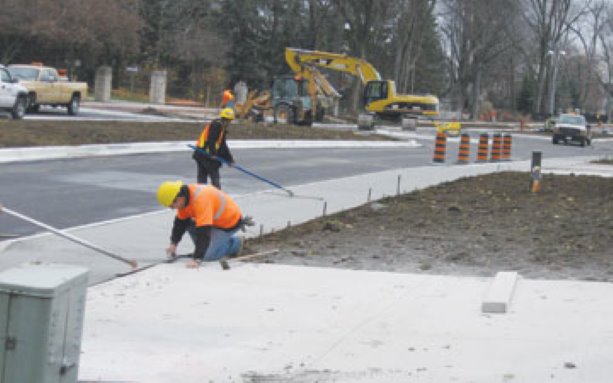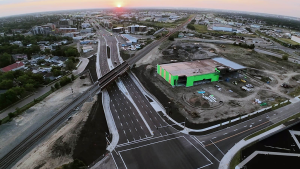Tucked away in the extreme southwest corner of Ontario where the Detroit River meets Lake Erie, is Amherstburg, pop. 22,000, a historic community with a fort that dates back to the War of 1812.
Infrastructure
AMHERSTBURG, Ont.
Tucked away in the extreme southwest corner of Ontario where the Detroit River meets Lake Erie, is Amherstburg, pop. 22,000, a historic community with a fort that dates back to the War of 1812.
Out of the blue, in early September, local Conservative MP Jeff Watson announced the town was the recipient of the largest grant in Canada of Community Adjustment Fund infrastructure money — $11.3 million — part of Ottawa’s economic stimulus package.
The money would essentially answer a wish list the town had for years.
A victim of factory closings since the 1970s, Amherstburg has sought to reinvent itself by attracting tourism to its historic sites and riverfront parks, modelling itself on Niagara-on-the-Lake.
But the money was never there to build a critical infrastructure, a critical gap billed by the stimulus funding.
A key part of the plan was development of a “heritage trail” to attract tourists and provide a more pedestrian-friendly environment. This involved tearing up streets and sidewalks — including a median along bucolic Laird Avenue where Fort Malden is located — readjusting sewer and utility lines, and creating decorative paved walkways.
But, to receive the grant, work has to be completed by March. Therefore tendering and construction had to get underway almost at once.
Windsor’s D’Amore Construction was the general contractor, with other work tendered to mainly local firms such as Giorgi Bros., Dunn Paving, Coco, SLR and Amico.
By the end of November virtually all the major work had been done. In fact, those managing the project have never seen such a quick turnaround between when spending was announced, plans drawn up, tenders approved, and work completed.
“This is a record, absolutely a record,” Lou Zarlenga, the town’s public works manager, said. “I’ve been in the industry for 35 years and nobody has done this before.”
In fact, consulting engineer Dave Archer of Windsor’s R.C. Spencer Associates Inc. said, some of the design had to be changed on the fly.
“We weren’t 100 per cent on the drawings so there were some changes, some addendums, being made throughout the tendering process,” he said. He also called the work an “evolving project — it’s not something based on timelines that were 100 per cent fixed.”
A good example was the high school bus lay-by along Laird Ave. the local street that was the centrepiece of the overall project. Archer said the plan was simply to repave the single lane of parking by an athletic field, enough room for seven buses. But one day he counted 12 buses squeezed into the area.
The solution was acquiring land and creating diagonal lanes – each with enough room for two buses – with decorative paved sidewalk at street level as “platforms” where students can disembark and board.
Archer described Laird Ave with its historic and expensive homes, and having a thick tree canopy, as a “jewel.” But there were a few problems with the layout.
Parking was ill-defined. “It could become just a mass of vehicles during special events,” he said.
As a result of the improvements, diagonal spots are clearly marked with decorative borders along with median bull noses that will contain planters. New curbs and gutters were also installed where ragged grass strips trailed-off into broken pavement.
The entire street had to be sunk two feet. The median was excavated including foliage along with some larger trees, provoking some public criticism.
Archer said the street had to be dropped “significantly” to alleviate water draining on to private properties at the north end. Some of the removed trees will be replanted but much of the new foliage will be young and small.
He acknowledges some starkness of the completed curb and gutter. But, he said, “Once the trees start to mature a little that real residential feel will return and it will be better than it was before.”
The new sidewalks are eight feet wide along the fort side of Laird — including a three-foot red decorative band — and six-feet-wide on the other side. The widened sidewalk continues around the town’s perimeter for several kilometres.
New street lights are coming. Duplex-style heritage lights are to be placed in the Laird median. And there will be pedestrian benches, trash receptacles, and information kiosks along the route.
Meanwhile, a two-acre storm retention pond at the town’s southern border was drained, including the removal of 10,000 fish and depositing them across the road in a natural creek — all completed within a few days.
The site is being groomed to a minimum eight-foot water depth, which will create its own ecosystem. Meanwhile landscaping, a walkway, a giant Inuksuk and a 70-foot masonry wall with fountain will provide a “spectacular” entrance to the town, Zarlenga said.











Recent Comments
comments for this post are closed